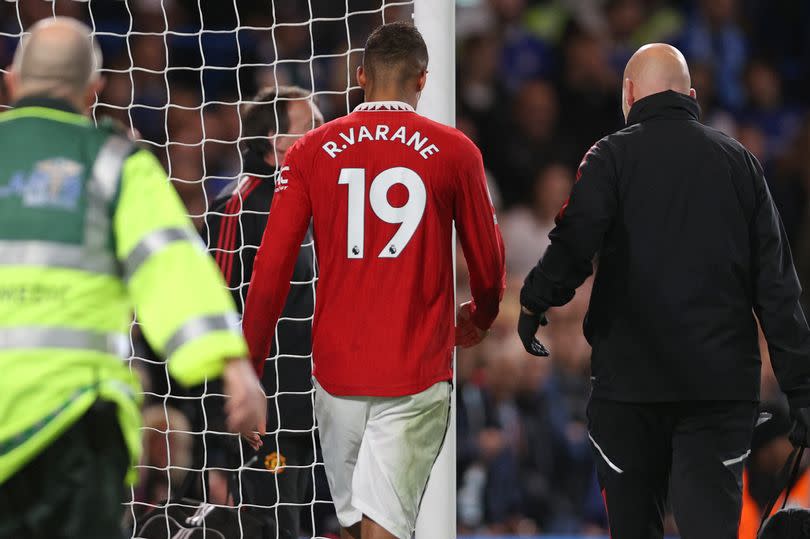Manchester United told to ask 'the real question' over injury crisis after Erik ten Hag comments

Erik ten Hag has pinned a large portion of the blame on injuries when explaining what has gone wrong at Manchester United this season.
233 games have been missed by injured United players this term, the fourth most of any team in the Premier League according to Transfermarkt. Muscle problems have been a key reason for many of United's absentees across the campaign, with Harry Maguire, Raphael Varane and Luke Shaw among the current players out of action due to this.
Speaking before Monday's 4-0 thrashing at Crystal Palace, Ten Hag could not hide his exasperation at the huge number of injury problems within his squad. "For over 10 years I am managing, I never had this experience," he said.
READ MORE: Rene Meulensteen admits Erik ten Hag 'isn't the right man to lead Man Utd forward'
"So huge, so many injury issues, so I trust all my experience, it can happen once in 10 years. Hopefully, now I have to wait another 10 to have so many injuries to deal with."
And a possible explanation has been provided by Stephen Smith, CEO of Kitman Labs. Smith's company are experts on sports science and performance intelligence, having worked with the Premier League and hundreds of other sports clubs and organisations.
When asked about any specific factors which could contribute to a muscle injury, he said: "We know that there are myriad different potential risk factors and that's what makes this so complex. There are several factors that all potentially influence or contribute to muscle injury, such as stress, strain and load in athletes and their own personal physicality and fitness levels.
"Additionally you have the biomechanics and the way they move, as well as how they recover and there’s also psychological aspects that play a role in what they’re doing day-to-day. In addition, there are variables such as surface conditions and footwear that play an impact on muscle injury."
Repetitive injuries have also been a problem at the club. Smith explained: "We typically can't isolate a single variable and proclaim that it's the lone contributing factor. If we want the answer, we need to ask the real question. It’s not 'what’s the main cause,' it's what do we know or understand about the contributing factors that led to it.
"It's about better understanding what athletes are doing, how they're recovering, gaining a better understanding on how they move, how they sleep.
"Additionally, it’s understanding each individual athlete's strength and fitness profile at the same time, and being able to track, monitor and quantify all these things, then understand and identify the patterns that are occurring prior to injuries emerging, which will allow clubs to make better decisions in the future and apply those insights or that intelligence to how they manage their athletes going forward."
On how clubs and coaches could help prevent injuries in elite sport, he added: "This is where our technology plays a huge role for clubs - in the collection, aggregation and analysis of all of that information related to potential risk factors, including all of the injuries that are occurring and how they're occurring, and all of the stresses and strains and loads that have been placed on their athletes.
"It's about consistently collecting that information over time, pressure-testing that information, identifying the patterns and then using that to drive learning and improved processes on and off the pitch. That's what we do for clubs across the game."

 Yahoo News
Yahoo News 
